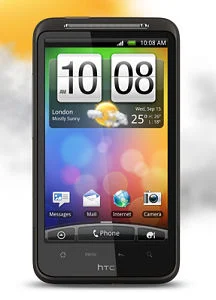The HTC Desire HD has been featured in numerous pre-release articles but it's only now that you are finally able to go and actually buy it. It's just you won't have to go anywhere as it's available in the online UK stores for several carriers, as well as a SIM-free version, too.
The beefy droid topped performance benchmarks, as it should - it has more RAM than some netbooks (768MB), and it's a champ at booting too. The Desire HD also features the latest Sense UI with HTCSense.com integration.
The site uSwitch has the HTC Desire HD on sale with a handy configurator to choose your plan (carrier, cost, minutes, texts, mobile Internet, etc.), starting from free. They have it SIM-free as well - it will set you back 465 pounds (that works out to 530 euro).
Expansys offer the Desire HD as well - 499 pounds (570 euro) or on a two-year Vodafone plan for free (35 pounds a month). On some other sites like Play.com, the HTC Desire HD is still on preorder but is expected to go on sale next Monday (October 25)
__________________________________________
__________________________________________
This post is brought to you by:
Abby Technology Limited, Auckland, New Zealand.
Abby Technology Limited, Auckland, New Zealand.
Mobile: +6421422443, abbytechnology[a]gmail.com







